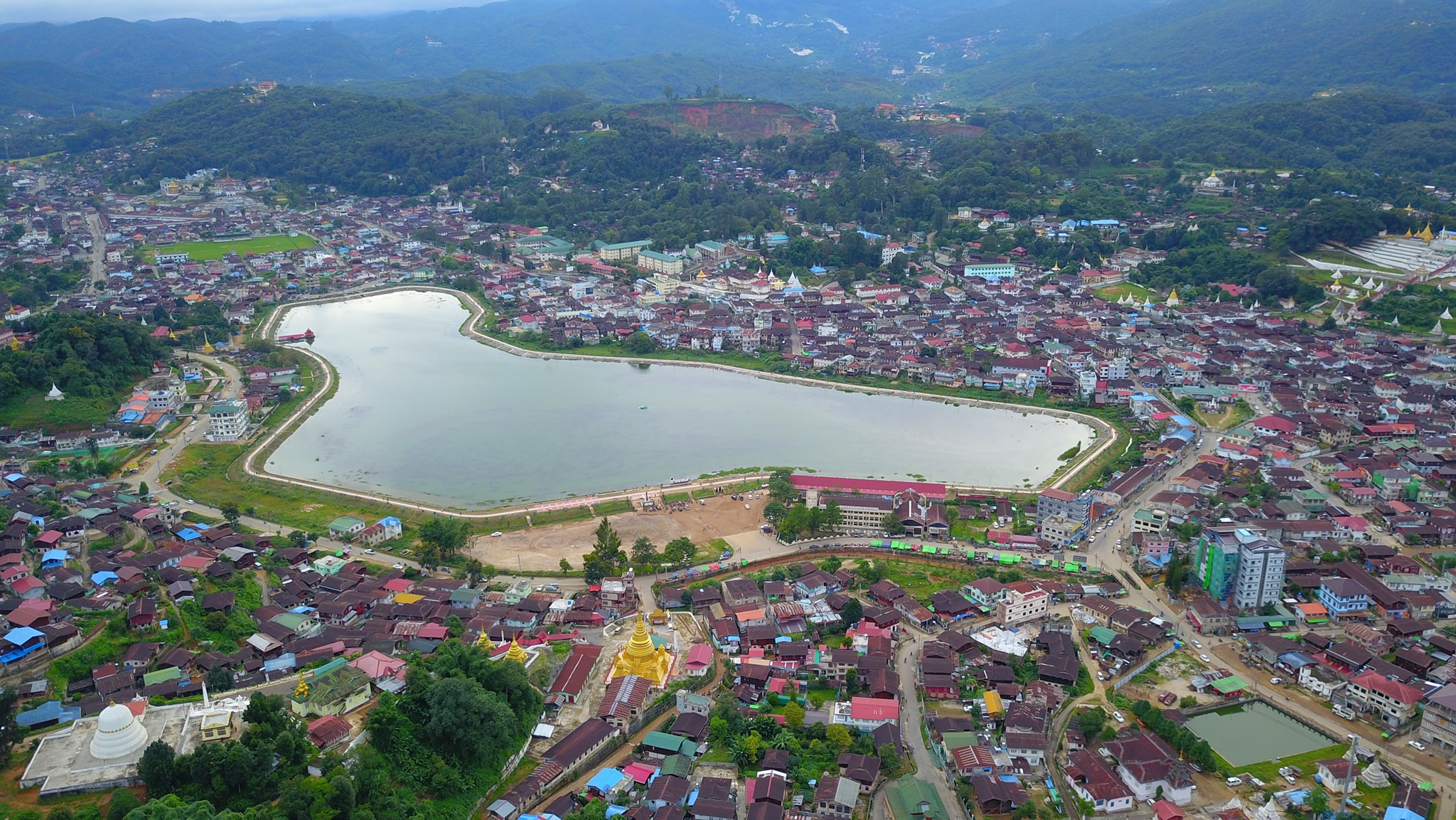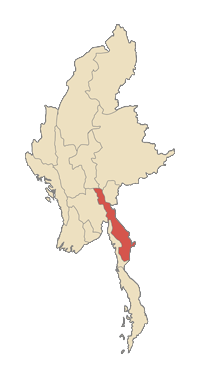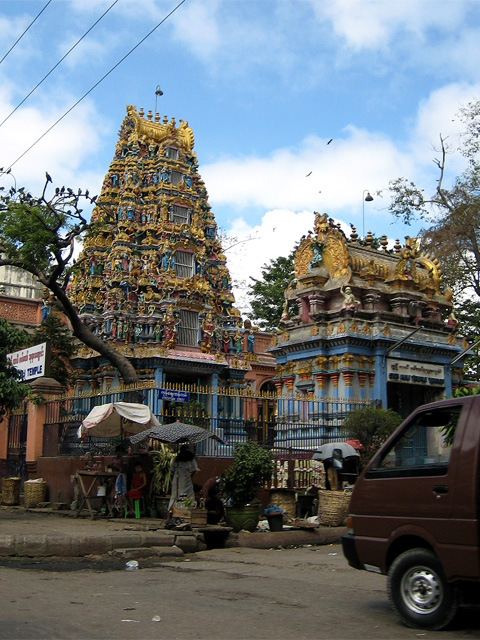|
Mogok
Mogok (, ; Shan: , ) is a town in the Thabeikkyin District of Mandalay Region of Myanmar, located north of Mandalay and north-east of Shwebo. History Mogok is believed to have been founded in 1217 by three lost Shan hunters who discovered rubies at the base of a collapsed mountain. According to the tale, the hunters returned to their home in Momeik and offered the precious stones to the local saopha who established a village in what would become modern-day Mogok. Following the 1885 Third Anglo-Burmese War in which the British conquered and annexed the hitherto independent Upper Burma, in 1886 the British launched a military expedition to "open up" the ruby mines at Mogok and make them available to British merchants. George Skelton Streeter, a gem expert and son of Edmund Streeter of the Streeters & Co Ltd jewllery company in London, accompanied the expedition and stayed there to work as a government valuer in the British-run mines. In 2018, the Mogok commemorated the 800t ... [...More Info...] [...Related Items...] OR: [Wikipedia] [Google] [Baidu] |
Mogok Township
Mogok Township is a township of Thabeikkyin District in Mandalay Region, Burma (Myanmar). It is located north of the city of Mandalay and surrounds the town of Mogok. Demographics 2014 The 2014 Myanmar Census reported that Kutkai Township had a population of 167,149. The population density Population density (in agriculture: standing stock or plant density) is a measurement of population per unit land area. It is mostly applied to humans, but sometimes to other living organisms too. It is a key geographical term.Matt RosenberPopul ... was 142.3 people per km². The census reported that the median age was 26.7 years, and 103 males per 100 females. There were 35,247 households; the mean household size was 4.5. References External links "Pyin Oo Lwin / Mogoke Map"Myanmar Information Management Unit (MIMU) "Mogok Google Satellite Map"Maplandia Townships of Mandalay Region {{Mandalay-geo-stub ... [...More Info...] [...Related Items...] OR: [Wikipedia] [Google] [Baidu] |
Momeik
Momeik ( my, မိုးမိတ်), also known as Mong Mit ( Shan: ) in Shan, is a town situated on the Shweli River in northern Shan State of Myanmar (Burma). Transport It is connected by road to Mogok and its ruby mines, and via Mogok to Mandalay, and to Kyaukme which is on the Mandalay-Lashio railway line. Momeik is also linked to Myitkyina, capital of Kachin State via Mabein and Bhamo. There is an airport for domestic flights to Momeik. Whereas Mogok lies at an elevation of 4,000 ft, Momeik is just 800 ft above sea level and 28 miles to the north of Mogok. Sixty miles by road to the west of Mogok lie Twinnge Village and the town of Thabeikkyin on the Ayeyarwady River (Irrawaddy). There is now a direct road linking Twinnge with Momeik. History Momeik, part of the state of Hsenwi, was founded in 1238. Thirteen villages of the Mogok Stone Tract were given to Momeik in 1420 as a reward for helping Yunnan raid Chiang Mai. In 1465, Nang Han Lung, the daughter- ... [...More Info...] [...Related Items...] OR: [Wikipedia] [Google] [Baidu] |
Thabeikkyin District
Thabeikkyin District ( my, သပိတ်ကျင်း ခရိုင်) is the district of Mandalay Region, Myanmar. It's principal town is Thabeikkyin. __TOC__ Townships The townships, cities, towns that are included in Thabeikkyin District are as follows: *Thabeikkyin Township **Thabeikkyin **Tagaung *Singu Township **Singu *Mogok Township Mogok Township is a township of Thabeikkyin District in Mandalay Region, Burma (Myanmar). It is located north of the city of Mandalay and surrounds the town of Mogok. Demographics 2014 The 2014 Myanmar Census reported that Kutkai Township had ... History On April 30, 2022, new districts were expanded and organized. Thabeikkyin, Singu and Mogok Townships from Pyinoolwin District were formed as Thabeikkyin District. References {{Administrative divisions of Burma (Myanmar) Districts of Myanmar Mandalay Region ... [...More Info...] [...Related Items...] OR: [Wikipedia] [Google] [Baidu] |
Burmese Gurkha
Burmese Gurkhas ( my, ဂေါ်ရခါးလူမျိုးများ; ne, गोरखाली) are a group of Nepali language speaking Burmese people of Khas/Gurkha ethnic group living in Myanmar (formerly Burma). While the Gurkhas have lived in Burma for many centuries, it was during the British rule in Burma that the majority of the Gurkha migrated from Nepal. The estimated population of Gurkha is nearly 1 million.The majority of Gurkha now reside in Yangon (Rangoon), Mandalay, Pyin U Lwin, Mogok, Tamu, Kalaymyo, Taunggyi, and other parts of the country. History and demography Like many other people who reside in Myanmar and who have their origin in Nepal, the majority of Gurkha came along with the British administration. Many Gurkhas served during the Second World War in the Burma Campaign, especially as rear guard units for the British retreat from Burma After Burma's independence in 1948, the Gurkhas joined the infant Burma Army. Many Gurkhas served in t ... [...More Info...] [...Related Items...] OR: [Wikipedia] [Google] [Baidu] |
Myanmar
Myanmar, ; UK pronunciations: US pronunciations incl. . Note: Wikipedia's IPA conventions require indicating /r/ even in British English although only some British English speakers pronounce r at the end of syllables. As John C. Wells, John Wells explains, the English spellings of both Myanmar and Burma assume a non-rhotic variety of English, in which the letter r before a consonant or finally serves merely to indicate a long vowel: [ˈmjænmɑː, ˈbɜːmə]. So the pronunciation of the last syllable of Myanmar as [mɑːr] or of Burma as [bɜːrmə] by some speakers in the UK and most speakers in North America is in fact a spelling pronunciation based on a misunderstanding of non-rhotic spelling conventions. The final ''r'' in ''Myanmar'' was not intended for pronunciation and is there to ensure that the final a is pronounced with the broad a, broad ''ah'' () in "father". If the Burmese name my, မြန်မာ, label=none were spelled "Myanma" in English, this would b ... [...More Info...] [...Related Items...] OR: [Wikipedia] [Google] [Baidu] |
Third Anglo-Burmese War
The Third Anglo-Burmese War ( my, တတိယ အင်္ဂလိပ် – မြန်မာစစ်, Tatiya Anggalip–Mran cac), also known as the Third Burma War, took place during 7–29 November 1885, with sporadic resistance continuing into 1887. It was the final of three wars fought in the 19th century between the Burmese and the British. The war saw the loss of sovereignty of an independent Burma under the Konbaung dynasty, whose rule had already been reduced to the territory known as Upper Burma, the region of Lower Burma having been annexed by the British in 1853, as a result of the Second Anglo-Burmese War. Following the war, Burma came under the rule of the British Raj as a province of British India. From 1937, the British governed Burma as a separate colony until Burma achieved independence as a republic in 1948. Background Following a succession crisis in Burma in 1878, the British Resident in Burma was withdrawn, ending official diplomatic relatio ... [...More Info...] [...Related Items...] OR: [Wikipedia] [Google] [Baidu] |
Lisu People
The Lisu people (Lisu: ; my, လီဆူလူမျိုး, ; ; th, ลีสู่) are a Tibeto-Burman ethnic group who inhabit mountainous regions of Myanmar (Burma), southwest China, Thailand, and the Indian state of Arunachal Pradesh. About 730,000 Lisu live in Lijiang, Baoshan, Nujiang, Dêqên and Dehong prefectures in Yunnan Province and Sichuan Province, China. The Lisu form one of the 56 ethnic groups officially recognized by China. In Myanmar, the Lisu are recognized as one of 135 ethnic groups and an estimated population of 600,000. Lisu live in the north of the country; Kachin State ( Putao, Myitkyina, Danai, Waingmaw, Bhamo), Shan State, (Momeik, Namhsan, Lashio, Hopang, and Kokang) and southern Shan State (Namsang, Loilem, Mongton) and, Sagaing Division ( Katha and Khamti), Mandalay Division (Mogok and Pyin Oo Lwin). Approximately 55,000 live in Thailand, where they are one of the six main hill tribes. They mainly inhabit remote mountainous areas. T ... [...More Info...] [...Related Items...] OR: [Wikipedia] [Google] [Baidu] |
Mandalay
Mandalay ( or ; ) is the second-largest city in Myanmar, after Yangon. Located on the east bank of the Irrawaddy River, 631km (392 miles) (Road Distance) north of Yangon, the city has a population of 1,225,553 (2014 census). Mandalay was founded in 1857 by King Mindon, replacing Amarapura as the new royal capital of the Konbaung dynasty. It was Burma's final royal capital before the kingdom's annexation by the British Empire in 1885. Under British rule, Mandalay remained commercially and culturally important despite the rise of Yangon, the new capital of British Burma. The city suffered extensive destruction during the Japanese conquest of Burma in the Second World War. In 1948, Mandalay became part of the newly independent Union of Burma. Today, Mandalay is the economic centre of Upper Myanmar and considered the centre of Burmese culture. A continuing influx of illegal Chinese immigrants, mostly from Yunnan, since the late 20th century, has reshaped the city's ethnic mak ... [...More Info...] [...Related Items...] OR: [Wikipedia] [Google] [Baidu] |
Karen People
The Karen, kjp, ပ်ုဖၠုံဆိုဒ်, my, ကရင်လူမျိုး, , th, กะเหรี่ยง ( ), also known as the Kayin, Kariang or Kawthoolese, are an ethnolinguistic group of Sino-Tibetan language–speaking peoples. The group as a whole is heterogeneous and disparate as many Karen ethnic groups do not associate or identify with each other culturally or linguistically. These Karen groups reside primarily in Kayin State, southern and southeastern Myanmar. The Karen, approximately five million people, account for approximately seven percent of the Burmese population. Many Karen have migrated to Thailand, having settled mostly on the Myanmar–Thailand border. A few Karen have settled in the Andaman and Nicobar Islands, India, and other Southeast Asian and East Asian countries. The Karen groups as a whole are often confused with the Padaung tribe, best known for the neck rings worn by their women, but t ... [...More Info...] [...Related Items...] OR: [Wikipedia] [Google] [Baidu] |
Ethnic Groups
An ethnic group or an ethnicity is a grouping of people who identify with each other on the basis of shared attributes that distinguish them from other groups. Those attributes can include common sets of traditions, ancestry, language, history, society, culture, nation, religion, or social treatment within their residing area. The term ethnicity is often times used interchangeably with the term nation, particularly in cases of ethnic nationalism, and is separate from the related concept of races. Ethnicity may be construed as an inherited or as a societally imposed construct. Ethnic membership tends to be defined by a shared cultural heritage, ancestry, origin myth, history, homeland, language, or dialect, symbolic systems such as religion, mythology and ritual, cuisine, dressing style, art, or physical appearance. Ethnic groups may share a narrow or broad spectrum of genetic ancestry, depending on group identification, with many groups having mixed genetic ancestry. Ethnic ... [...More Info...] [...Related Items...] OR: [Wikipedia] [Google] [Baidu] |
Burmese Chinese
Chinese Burmese, also Sino-Burmese or Tayoke, are a Burmese citizens of full or partial Chinese ancestry. They are group of overseas Chinese born or raised in Myanmar (Burma). As of 2012, the Burmese Chinese population is estimated to be as high as 3 per cent of the country's population. Burmese Chinese are a well established middle class ethnic group and are well represented in all upper levels of Burmese society. Burmese Chinese also play a leading role in Burma's business sector and dominate the Burmese economy. In addition, Burmese Chinese have a strong presence in Burma's political scene with several people such as San Yu, Khin Nyunt, and Ne Win having been major political figures. Etymology In the Burmese language, the Chinese are called ''Tayoke'' (, ''tarut'', ) and formerly spelt (''tarup''). The earliest evidence of this term dates to the Bagan Era, in the 13th century, during which it referred to the territory and a variety of peoples to the north and northeast ... [...More Info...] [...Related Items...] OR: [Wikipedia] [Google] [Baidu] |
Burmese Indians
Burmese Indians are a group of people of Indian origin who live in Myanmar (Burma). The term 'Burmese Indian' refers to a broad range of people from South Asia, most notably from present-day countries such as India, Bangladesh and also Pakistan. While Indians have lived in Burma for many centuries, most of the ancestors of the current Burmese Indian community emigrated to Burma from the start of British rule in the mid-19th century to the separation of British Burma from British India in 1937. During colonial times, ethnic Indians formed the backbone of the government and economy serving as soldiers, civil servants, merchants, moneylenders, mobile laborers and dock workers. A series of anti-Indian riots in the 1930s and mass emigration at the onset of the Japanese invasion of Burma in 1942 were followed in the 1960s by the forced migration of hundreds of thousands of ethnic Indians, exacerbated by internal conflict in Myanmar. Burmese Indians today are estimated to account fo ... [...More Info...] [...Related Items...] OR: [Wikipedia] [Google] [Baidu] |






